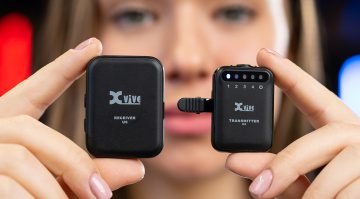XVive debuts the U4 wireless in-ear monitoring system
XVive has announced the U4 wireless in-ear monitoring system. The affordable XVive U4 uses digital transmitting technology and is simple to set up and use, the company says. XVive also lists durability, reliability and good audio specs as some of the advantages.
XVive U4 wireless in-ear monitoring
With the U4, musicians have a new, affordable alternative to products by established manufacturers like Sennheiser, Shure and LD Systems. According to XVive, the U4 offers a full frequency range of 20 Hz – 20 kHz and a signal-to-noise-ratio of 107 dB. The company claims that this ensures a clear and transparent signal at any volume level. The wireless system uses the 2.4 GHz ISM band for a range of approximately 27 meters without signal drop-outs. One transmitter can be combined with several receivers, for which the U4 offers a total of six selectable channels.
The U4 is powered by rechargeable lithium ion batteries, which are environmentally friendly and last for about five hours, according to the manufacturer. That’s a bit less than what some competitors are offering, but should still be plenty of time for most gigs – unless you’re Bruce Springsteen, of course. The company says that the transmitter and receiver units have rugged metal enclosures to withstand the rigours of the road and harsh climatic conditions. The compact transmitter doesn’t come in a bulky box, but rather plugs straight into an XLR output. How well this works with closely spaced XLR outputs will have to be seen, and since many mixers (especially affordable ones) have 1/4″ aux outputs, you may find yourself needing an adapter.
Price and availability
The U4 wireless in-ear monitoring system is available in various configurations and bundles:
- 1 transmitter, 1 receiver: EUR 239
- 1 transmitter, 2 receivers: EUR 359
- 1 transmitter, 4 receivers: EUR 599
- transmitter: EUR 129
- receiver: EUR 129
According to XVive, the U4 will begin shipping near the end of December 2019.
More information
Video
You are currently viewing a placeholder content from YouTube. To access the actual content, click the button below. Please note that doing so will share data with third-party providers.








